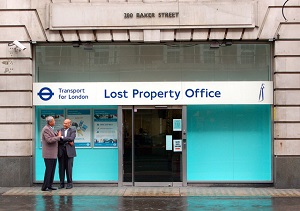You have no items in your cart. Want to get some nice things?
Go shopping
Much like Webster’s text, Annie Ryan’s productions thrives on set pieces and witty verbal parrying. It’s impossible not to smile at Webster’s virtuosity in the furious barrage of asides between Flamineo and Vittoria as they convince Camillo to lock himself in his closet, leaving his wife free for a night of passion with Bracciano. Similarly, the famous arraignment of Vittoria does not disappoint. Kate Stanley-Brennan plays the court with an expert hand, caustically parrying Monticelso and Francisco’s misogynistic rants.
I’ve always thought that The White Devil is best enjoyed when read as a comedy, and the comic elements of Ryan’s production were often the strongest. The slightly confounding dumb-show in which Bracciano foresees the outcomes of the murders he has plotted here plays out like a Charlie Chaplin film, complete with slapstick violence and a character toppling comically over a balcony to his death. Joseph Timms channels Russell Brand as Flamineo, a frenetic master of ceremonies whose banter with the audience makes the vast amount of blood on his hands easy to overlook.
It’s all riotously entertaining, yet look too hard and it starts to appear a little hollow. Director Annie Ryan compares Webster to Tarantino in the programme notes, and this production shares some of the veteran film director’s flaws. The violence is comic in its excess, to the point that we cease to care that someone has died. We laugh when Fergal McElherron’s ridiculous Camillo hurtles through a trap door to his sticky end and react with a shrug when Isabella (one of the only characters who isn’t entirely despicable) is poisoned by her husband during her nightly ritual of kissing his portrait. Of all the baroque deaths Webster devised for his characters, Isabella’s is perhaps the most poignantly ironic, yet the frenetic and primarily comic tone of this production fails to do it justice.
Part of the problem is that The White Devil’s characters are very difficult to care about. The Sam Wanamaker Playhouse opened with Webster’s second play, The Duchess of Malfi, back in 2014, which boasted an exceptional performance from Gemma Arterton among its other virtues. Arterton’s Malfi was a tragic heroine who could stand shoulder to shoulder with some of Shakespeare’s creations; we were deeply invested in her transition from carefree youth to a woman weathered into tough nobility. Vittoria by contrast falls some way short of Malfi’s tragic stature and, despite an otherwise convincing performance, Stanley-Brennan fails to make sense of Webster’s sketchy character development. Malfi and Vittoria show a similar stoicism when facing death, but it’s difficult for the audience to care enough about the latter to give her untimely end the weight it deserves.
Much like a Tarantino film, this production was muscular and energetic, yet distinctly lacking in psychological death. Stanley-Brennan’s Vittoria and Jamie Ballard’s Bracciano were devoid of any sexual chemistry. Nine deaths springing for an insatiate passion may be somewhat disproportionate; all that killing over an affair this tepid is ludicrous. Similarly, Timms’ Flamineo is very entertaining, yet lacks the dangerous edge of a man who in Act 5 decides to systematically slaughter his siblings. Ryan seems to want to flesh out the relationship between Vittoria and Flamineo, casting them as mischievous co-conspirators, yet when Flamineo eventually turns on his sister we’re again denied the emotional punch we’ve been waiting for.
What we’re left with is nothing to be scoffed at – glittering displays of dark eloquence and seedy machinations by candlelight – yet this is hampered in part by some of the liberties text editor Michael West takes. Webster famously complained in his introduction to the 1612 quarto that his contemporary audiences were ‘ignorant asses’ incapable of appreciating his masterpiece; West avoids similar risks by cutting some of Webster’s strangest language and most elaborate metaphors. This naturally does wonders for the pacing, but you do feel a bit cheated when you realise you’ve missed Flamineo’s bizarre analogy comparing a bird that removes a worm from a crocodile’s teeth to the relationship between Vittoria and Bracciano, along with Isabella’s promise that her gentle behaviour will act like the powder of a unicorn’s horn encircling a spider, a magical defence against Bracciano’s poison.
Webster’s imagery frames the play within the often unsettling advances in Renaissance science and the gradual overthrow of ancient learning. It also suggests an amoral, almost godless world in which abhorrent behaviour is figured more as a natural fact of life than evil in a spiritual sense. Vittoria behaves like a crocodile; Bracciano like a spider. Webster’s many references to earthquakes (all retained in this production) are a good metaphor for much of the violence in the play. Evil just happens, with scant psychological motivation and little emotional resonance. This can be quite exciting: Flamineo is much more vivacious and compelling than Bosola, the lumbering malcontent of The Duchess of Malfi who gradually becomes burdened with a conscience. The play’s amorality, however, is also infectious and often translates as apathy for the audience.
Today’s theatre audiences are faced with insurmountable political challenges and frequent outbreaks of horrific violence across Europe. We are, most likely, all too familiar with gazing at an amoral world and feeling powerless, disconnected, perhaps not able to feel anything at all. It is undoubtedly a pleasure to sample Webster’s dark and seedy vision and Ryan certainly does a good job of entertainingly rendering it, yet if we want a fix of glossy nihilism we need only turn on the evening news.
Since theatre’s Athenian origins, Aristotle argued that tragedy should make us feel pity and fear, and his idea of catharsis suggested these strong feelings somehow made us better people. It might be a bit of a stretch to argue that theatre is some kind of moralising force, but in a world where we are increasingly desensitised to the most horrific violence, theatre should deliver more than stylised savagery and make us care as the dramatis personae drop like flies. Webster may hold a special place in my heart, but his theatre of blood sits uncomfortably in our troubled times.
The White Devil continues at the Sam Wanamaker Playhouse until Sunday April 6. Tickets are available from £10 standing and £15 seated.

About Simon Fearn
Simon is a student at Durham University and aspiring theatre critic. He has reviewed at the Edinburgh Fringe with EdFringeReview and is Stage Editor for Durham's student newspaper, Palatinate. He has also written music reviews for W!zard Radio and Cuckoo Review.




